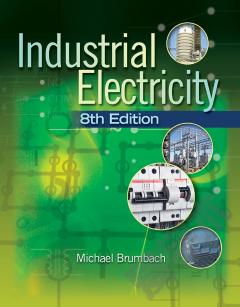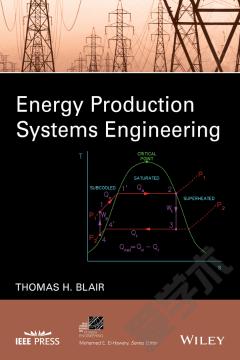Industrial Power Systems
INTRODUCTION SYSTEM PLANNING Basic Design Considerations Plant Distribution Systems Distribution Types Plant Power Demand and Load Estimate Voltage Considerations POWER SYSTEM STUDIES Useful Formulae Load Flow Short Circuits Protective Device Coordination Arc-Flash Hazard Calculations Harmonic Analysis Power System Stability Other Common Studies and Calculations SYSTEM NEUTRAL GROUNDING Ungrounded System High-Resistance (HR) Grounded System Low-Resistance (LR) Grounded System Solidly Grounded Neutral System Generator Neutral Grounding Grounding of Mine Power System Neutral Grounding Equipment System Capacitance Data POWER TRANSFORMERS AND REACTORS General Oil-Filled (Immersed) Transformers Nonflammable Liquid-Filled Transformers Dry-Type Transformers Transformers for Nonlinear Loads Generator Step-Up and Other Special Transformers Installation of Oil-Filled Transformers and Reactors Reactors Inspection and Testing INSTRUMENT TRANSFORMERS Current Transformers Voltage Transformers Grounding of Secondary European Standards SWITCHGEAR, CIRCUIT BREAKERS, AND MOTOR CONTROL CENTER Low Voltage Medium Voltage Load-Interrupter Switchgear Power Fuse Medium- and High-Voltage Circuit Breaker SF6 Gas-Insulated Switchgear (GIS) Low- and Medium-Voltage Motor Control Centers STATION BATTERY System Types DC Distribution Systems Types of Battery Battery Chargers Application Criteria Battery Sizing APPLICATION AND PROTECTION OF MEDIUM-VOLTAGE MOTORS Load Characteristics Squirrel-Cage Induction Motors Wound Rotor (Slip Ring) Induction Motors Synchronous Motors Electric Motors for Variable Frequency Drives Voltage Drop and Acceleration Time Motor Controllers and Starting Methods POWER AND CONTROL CABLES Cable Selection Criteria Cable Shielding Additional Application Considerations Cable Insulation Testing Control Cables PROTECTION Protection and Coordination Principles Transformer Protection Motor Protection Generator Protection Feeder Protection Capacitor Protection Reactor Protection Bus Protection HIGH-VOLTAGE SUBSTATION DESIGN CONSIDERATIONS Necessary Information for the Design of Substations Standards and Design Principles for Substation Design Substation Electrical Configuration Secondary System Aspects of Substation Design High-Altitude Considerations Substation Design Considerations Grounding Design and Lightning Protection Medium- and Low-Voltage Substations and Switchgear Site Testing and Commissioning SUBSTATION GROUNDING DESIGN CONSIDERATIONS Soil-Resistivity Measurements Permissible Potential Difference Maximum Ground Current Selection of Conductors and Joints Design of Grounding System Treatment of Substation Fence Case Study (Ground Grid Design) Conclusion ELECTRICAL ASPECTS OF POWER GENERATION Generator Rating and Parameters Excitation System Synchronizing Integration into the Power System Plant Power System and Utility Interface System Disturbances and Islanding Induction Generator Station Auxiliaries APPLICATION OF CAPACITORS Capacitor Application Large-Bank Construction Control and Monitoring Systems Capacitor Protection and Monitoring Capacitor-Bank Resonances IMPACT OF NONLINEAR LOADS ON POWER SYSTEM AND EQUIPMENT Harmonics and Resonance Variable-Frequency Drives System Neutral Grounding Design Recommendations for Mitigation of Harmonics
{{comment.content}}








 京公网安备 11010802027623号
京公网安备 11010802027623号